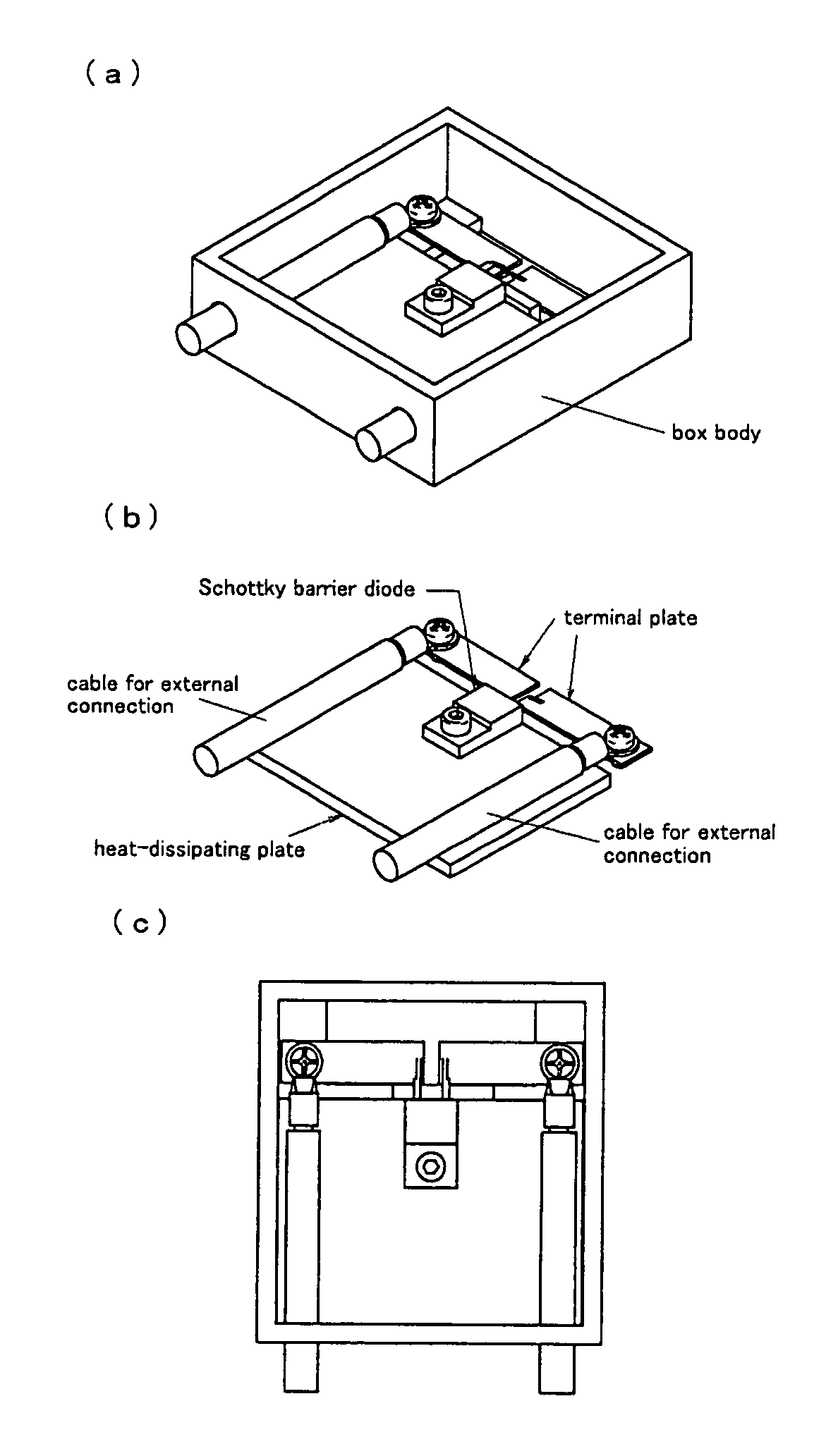Terminal box for a solar cell panel
a solar cell panel and terminal box technology, applied in the direction of light radiation electric generators, coupling device connections, generators/motors, etc., can solve the problems of diode typically generating heat violently, diode may be broken, and the life of the diode may become considerably short, so as to achieve no breakage or shorten the life of the diode, and reduce the risk of damage to the terminal box. , the effect of reducing the risk of damag
- Summary
- Abstract
- Description
- Claims
- Application Information
AI Technical Summary
Benefits of technology
Problems solved by technology
Method used
Image
Examples
example 1
(1) Example 1
[0056]As a bypass diode, a Schottky barrier diode of 55V rating type shown in Table 2 was used to prepare a test sample having a structure as shown in FIG. 5. In the test sample of FIG. 5, two pairs of (four sheets of) terminal plates are placed in the inside of a box body made of resin, and three surface-mounting type Schottky barrier diodes are electrically connected thereto. Among the four sheets of terminal plates, the three sheets of terminal plates excluding the terminal plate on the right end are enlarged to be planarly larger than the usual dimension (See also the plan view of the inside of the box body shown in FIG. 6 for reference). In addition, three sheets of heat-dissipating plates are respectively mounted on the enlarged terminal plates.
example 2
(2) Example 2
[0057]A test sample was prepared in the same manner as in the Example 1 except that the diode was changed to a 55V rating low-leakage type Schottky barrier diode shown in Table 2 in the test sample shown in FIG. 5.
example 3
(3) Example 3
[0058]A test sample was prepared in the same manner as in the Example 1 except that the diode was changed to a 100V rating type Schottky barrier diode shown in Table 2 in the test sample shown in FIG. 5.
PUM
 Login to View More
Login to View More Abstract
Description
Claims
Application Information
 Login to View More
Login to View More - R&D
- Intellectual Property
- Life Sciences
- Materials
- Tech Scout
- Unparalleled Data Quality
- Higher Quality Content
- 60% Fewer Hallucinations
Browse by: Latest US Patents, China's latest patents, Technical Efficacy Thesaurus, Application Domain, Technology Topic, Popular Technical Reports.
© 2025 PatSnap. All rights reserved.Legal|Privacy policy|Modern Slavery Act Transparency Statement|Sitemap|About US| Contact US: help@patsnap.com



